
AviaBellanca Aircraft Corporation is an American aircraft design and manufacturing company. Prior to 1983, it was known as the Bellanca Aircraft Company. The company was founded in 1927 by Giuseppe Mario Bellanca.

The Glenn L. Martin Company was an American aircraft and aerospace manufacturing company founded by aviation pioneer Glenn L. Martin. The Martin Company produced many important aircraft for the defense of the US and allies, especially during World War II and the Cold War. During the 1950s and 60s, the Martin Company moved from the aircraft industry into the guided missile, space exploration, and space utilization industries.

Donald Wills Douglas Sr. was an American aircraft industrialist and engineer.
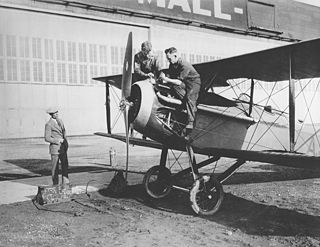
Vought is the name of several related American aerospace firms. These have included, in the past, Lewis and Vought Corporation, Chance Vought, Vought-Sikorsky, LTV Aerospace, Vought Aircraft Companies, and the current Vought Aircraft Industries. The first incarnation of Vought was established by Chance M. Vought and Birdseye Lewis in 1917. In 1928, it was acquired by United Aircraft and Transport Corporation, which a few years later became United Aircraft Corporation; this was the first of many reorganizations and buyouts. During the 1920s and 1930s, Vought Aircraft and Chance Vought specialized in carrier-based aircraft for the United States Navy, by far its biggest customer. Chance Vought produced thousands of planes during World War II, including the F4U Corsair. Vought became independent again in 1954, and was purchased by Ling-Temco-Vought in 1961. The company designed and produced a variety of planes and missiles throughout the Cold War. Vought was sold from LTV and owned in various degrees by the Carlyle Group and Northrop Grumman in the early 1990s. It was then fully bought by Carlyle, renamed Vought Aircraft Industries, with headquarters in Dallas, Texas. In June 2010, the Carlyle Group sold Vought to the Triumph Group.
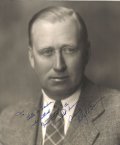
Leroy Randle "Roy" Grumman was an American aeronautical engineer, test pilot, and industrialist. In 1929, he co-founded Grumman Aeronautical Engineering Co., later renamed Grumman Aerospace Corporation, and now part of Northrop Grumman.

Keystone Aircraft Corporation was an early pioneer in airplane manufacturing. Headquartered in Bristol, Pennsylvania, it was formed as Ogdensburg Aeroway Corp in 1920 by Thomas Huff and Elliot Daland, but its name was quickly changed to Huff-Daland Aero Corp, then to the Huff-Daland Aero Company. The company made a name for itself in agricultural aircraft, and then in the United States Army Air Corps' early bomber aircraft. From 1924, James McDonnell was the chief designer.
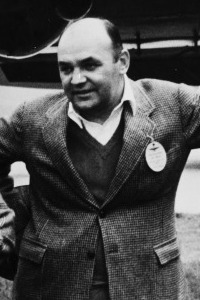
Leon Albert "Jake" "The Bullfrog" Swirbul, was an aviation pioneer and co-founder of Grumman Aircraft Engineering Corporation.

The Keystone-Loening K-84 Commuter was a single-engine closed cabin 4 place biplane amphibious flying boat built by Keystone-Loening. It was powered by a 300 hp Wright Whirlwind engine mounted between the wings with the propeller just ahead of the windscreen. It was first produced in 1929.
Lloyd Carlton Stearman was an American aviator, aircraft designer, and early aviation entrepreneur.

Grover Cleveland Loening was an American aircraft manufacturer.
Clement Melville Keys (1876–1952) was a financier involved in the establishment of many aviation companies including Curtiss-Wright, China National Aviation Corporation, North American Aviation and TWA. He has been called "the father of commercial aviation in America."

Olive Ann Beech was an American aerospace businesswoman who was the co-founder, president, and chairwoman of the Beech Aircraft Corporation. She founded the company in 1932 with her husband, Walter Beech, and a team of three others. She earned more awards, honorary appointments, and special citations than any other woman in aviation history and was often referred to as the “First Lady of Aviation”.

Formed as Ogdensburg Aeroway Corp in 1920 in Ogdensburg, New York by Thomas Huff and Elliot Daland, its name was quickly changed to Huff-Daland Aero Corp and then in 1925 it was changed again to the Huff-Daland Aero Company with its main headquarters in Bristol, Pennsylvania. Huff-Daland produced a series of biplanes as trainers, observation planes, and light bombers for the U.S. Army and Navy.

The Loening OL, also known as the Loening Amphibian, was an American two-seat amphibious biplane designed by Grover Loening and built by Loening for the United States Army Air Corps and the United States Navy.
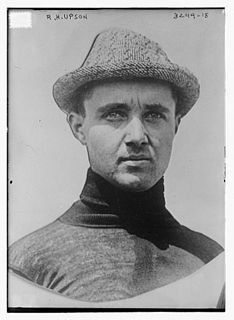
Ralph Hazlett Upson was a pioneer in the aviation field, holding Airship Pilot's Certificate #7, Balloon Pilot's Certificate #48 and Pilot's License #10290. Upson designed the world's only all-metal stressed-skin airship and contributed to aerospace technology research. He won the 1913 International Balloon Race. He was the second individual to win the Wright Brothers Medal in 1929.
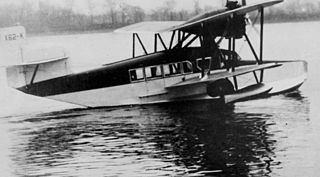
The Loening C-4C, later the Keystone-Loening K-85 Air Yacht following the merger of the Loening and Keystone companies, was an amphibious utility biplane built in the United States in the late 1920s. It was developed by Grover Loening from the C-1 that he had created together with Leroy Grumman, incorporating a new fuselage design. This departed from the characteristic Loening design feature of having a slender, "shoehorn" float projecting from the underside of the fuselage with an engine mounted tractor-fashion above it. Instead, the C-4C had a conventional flying-boat hull, with an enclosed cabin for passengers. The engine was mounted in a separate nacelle on the leading edge of the upper wing.
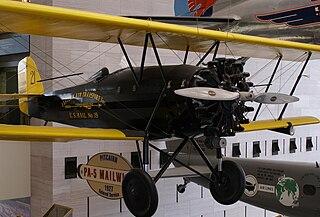
The Pitcairn Aircraft Company was an American aircraft manufacturer of light utility aircraft. An early proponent of the autogyro, the company, later known as the Autogiro Company of America among other names, remained in business until 1948.
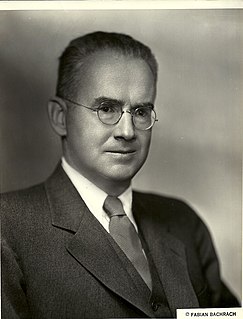
George Jackson Mead was an American aircraft engineer. He is best known as one of the chief founding team members, together with Frederick Rentschler, of Pratt & Whitney Aircraft. Mead and Rentschler left Wright Aeronautical with the plan to start their own aviation-related business; they founded Pratt & Whitney Aircraft in July 1925. Their first project was to build a new, large, air-cooled, radial aircraft engine of Mead's design, which soon came to be named the Wasp. The first Wasp model was the R-1340, and a large series of Wasp models and Hornet models followed. Mead, as Vice President of Engineering, was the head of engineering for Pratt & Whitney from 1925 to 1935. He later left Pratt & Whitney and its parent United Aircraft. He served as the president of the U.S. National Advisory Committee for Aeronautics (NACA), and he served as head of the aeronautical section of the National Defense Advisory Commission during World War II, as a manager in the U.S. government's war materiel production effort.

Edgar Nathaniel Gott was an early American aviation industry executive. A co-founder and first president of The Boeing Company, Gott was a senior executive of several aircraft companies, including Fokker and Consolidated Aircraft.

















